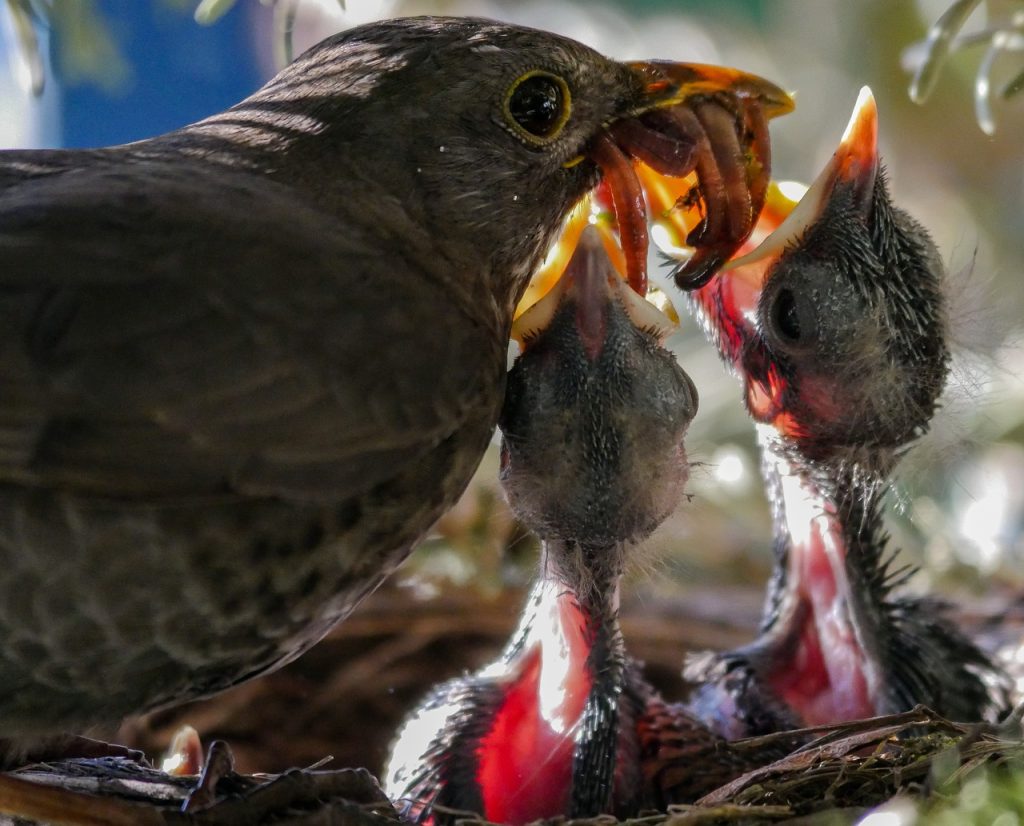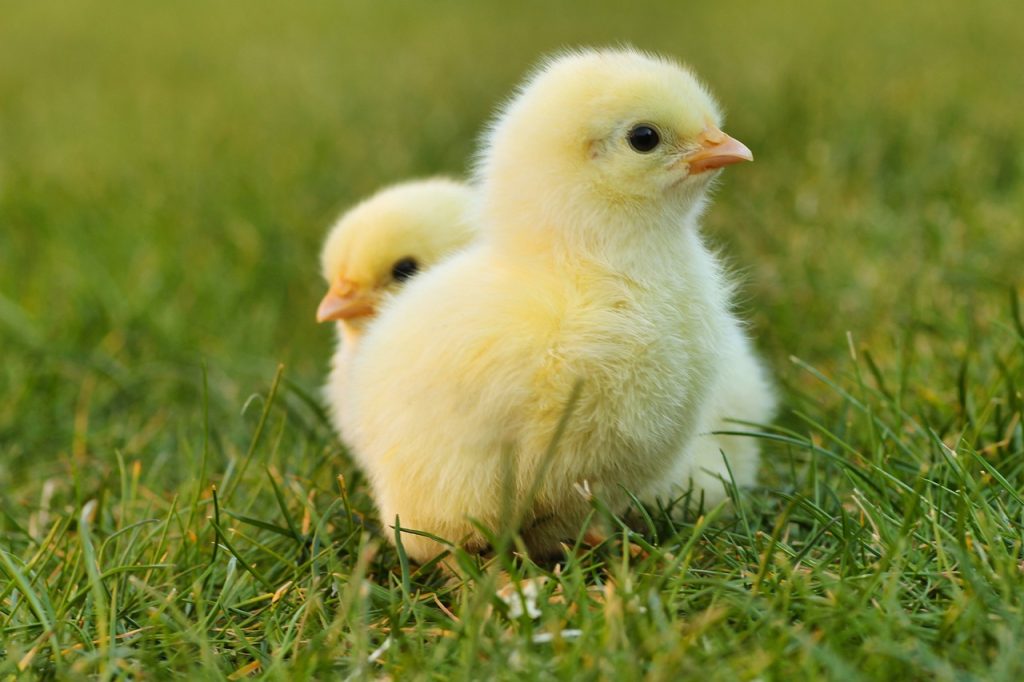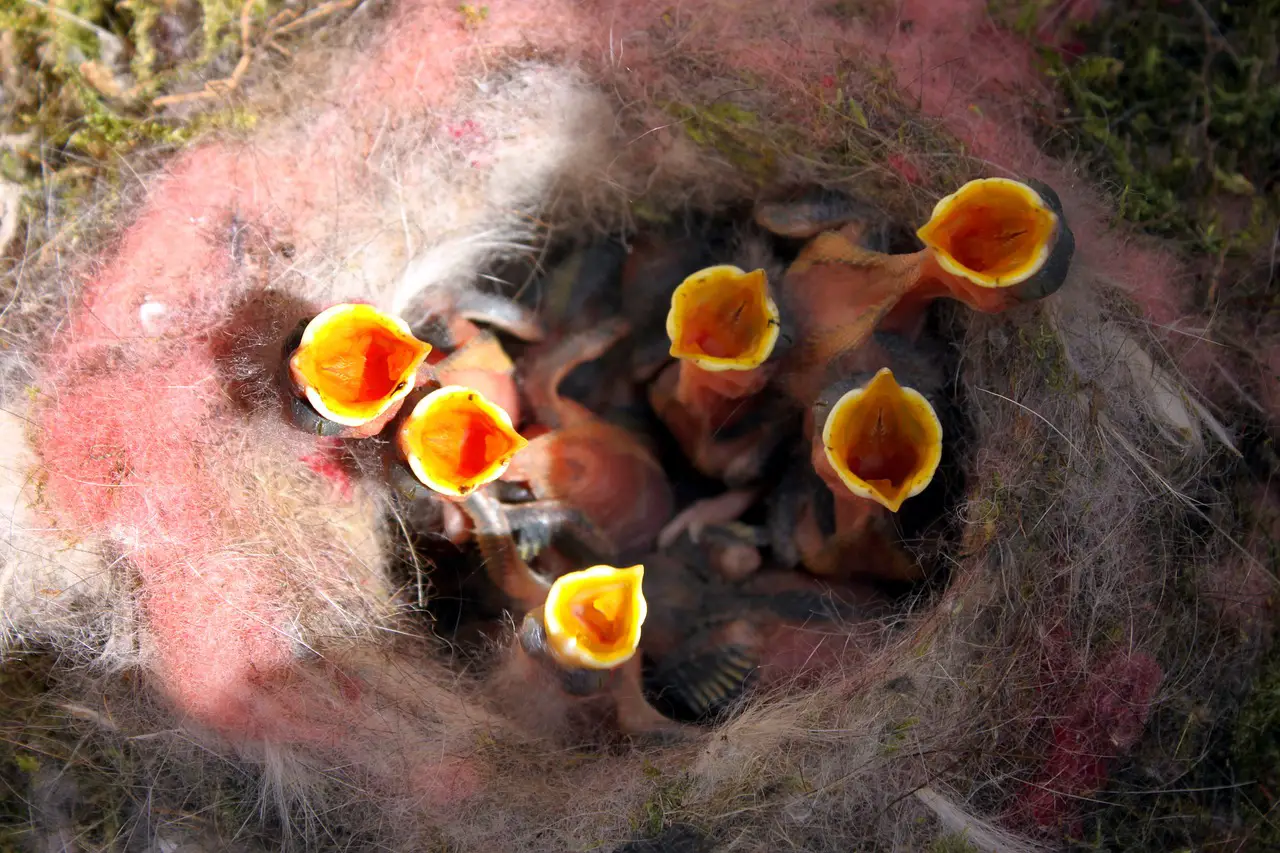When we think of a newborn bird, we either think of the fluffy chick or the naked songbird. While both are different, it shows that not all birds are born with feathers.
Altricial species such as cuckoos, herons, hawks, owls, and woodpeckers are born without feathers, while precocial species such as chickens, geese, and ducks are born with feathers. Most altricial species rely on their parents to bring food to the nest, while precocial species find their own food.
Whether a bird is born with or without feathers depends on its species. These chicks are either altricial or precocial, and the difference between them has a lot to do with their location, behaviour, and threat from predators.
Do you know how bird regulate their temperatures? Find out in this article I wrote

No feathers (Altricial)
We often think of the stereotypical image of the naked chick with its eyes closed in a nest. These birds are altricial. They require time to develop to gain their sight, strength and grow their feathers. They do this outside of the egg, relying on their parents to nurture them.
The main reason that altricial birds survive when born is because of their nesting behaviour. Altricial birds generally lay a clutch of eggs in a specially designed nest, out of reach from predators. However, not all will survive if a predator does find the nest. By keeping chicks in the nest, there is a good chance that some chicks will finish their development and become fledglings.
During the first few weeks, their feathers start to grow, providing warmth and their first flight feathers. Until they develop their feathers, they require body heat from their parents. Chicks will leave the nest when they can fly, but the parents will still feed them for a while. In the worst cases, chicks may fall from the nest or get pushed out by siblings. Unfortunately, without their feathers, they have little chance of survival.
Some birds develop in nests with their parents but are not fully altricial. While most altricial birds are songbirds, many birds of prey, such as hawks, eagles, and owls, are born with a coat of downy feathers and eyes open. They are more developed after hatching than those songbirds but still require care and regular feeding at the nest. These birds are called semi-altricial.
Do you know why birds lose their feathers? Find out here

Feathers (Precocial)
Another image of a young bird is the fluffy yellow chick. Precocial birds have a different strategy from altricial birds. Many precocial birds use ground nests such as waders and waterfowl. Because of the risk of predation, these chicks must be ready from the day they are born. Precocial birds are born with their eyes open and can run and feed.
The feathers provide warmth which is essential if chicks stay by their parent’s side and out of harm’s way. Predatory species could swoop in and pick up a chick easily. This is less likely if the chick can run or swim away and if they are by their parent’s side.
It is also common that precocial birds have larger clutches of eggs than altricial birds. Altricial songbirds will attempt to lay two clutches of about six eggs over the year and carefully raise them in the nest. Precocial birds know their survival rate is lower and will have one big brood. This increases the chance of at least a few offspring surviving.
How long before birds can fly?
Precocial birds born with feathers may get up and move around after birth, but they cannot fly straight away. It can take up to six weeks for the full flight feathers to develop, but most birds are ready to fly from about two weeks. It takes time for birds born with no feathers to build the skills, strength, and feathers they need to survive.
All chicks, whether precocial or altricial, need protection during this time. Parents will encourage chicks to fly when the time is right, which will depend on the species.
Camouflage
The sub-category of semi-precocial birds explains a plumage trend in birds like gulls and terns. Many will have a mottled look to their first downy feathers. This helps break up their shape and blend into the ground on a sandbank or stony shore. Those that stay completely still and quiet while their parents are away are practically invisible.
While some species are born with feathers, others are not. We can categorize birds as either altricial or precocial, which determines whether they are born with or without feathers. Feathers from birds are a necessity for some species and not others. It all depends on the best strategy for survival.
Birds sometimes have a patch of missing feathers? Find out about the brood patch here

